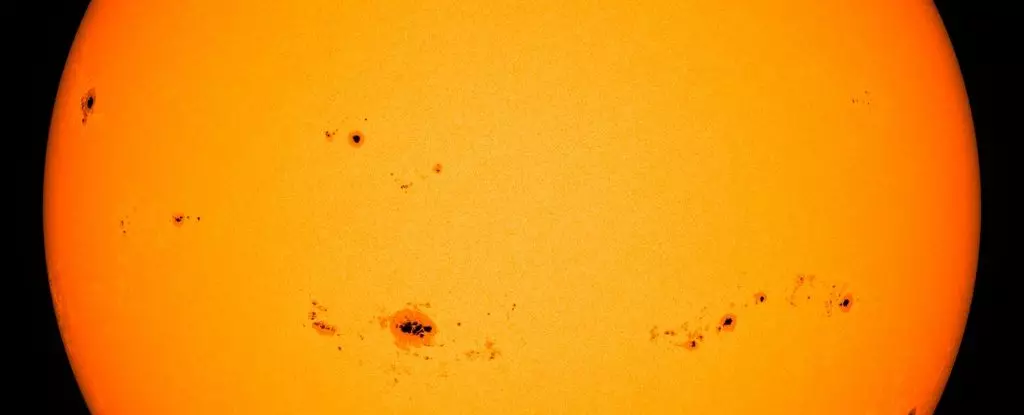As we venture into a new chapter of solar activity, significant announcements from NASA, the National Oceanic and Atmospheric Administration (NOAA), and the Solar Cycle Prediction Panel have captured the attention of scientists and laypeople alike. We’ve officially entered a phase known as solar maximum, a peak period in the Sun’s inexorable 11-year activity cycle. This uptick in solar dynamics signifies a noticeable increase in sunspots, solar flares, and coronal mass ejections (CMEs). But what exactly does this mean for us on Earth, and how should we prepare for the oncoming celestial phenomena?
The Sun, often taken for granted as a fixed and constant presence, is actually subject to profound changes that affect its outward behavior. The solar cycle, characterized primarily by the ebb and flow of sunspots, is a critical aspect of solar dynamics that scientists have been trying to unravel for decades. It is commonly known that sunspots are areas on the Sun’s surface where the magnetic field is particularly intense and chaotic, leading to cooler and darker patches. However, what drives the solar dynamo—responsible for the generation of these magnetic fields—remains one of astrophysics’ greatest mysteries.
The typical duration of these cycles is about 11 years, but they can vary in length, intensity, and timing of solar maximum and minimum phases. As solar astrophysicists like Michael Wheatland point out, our ability to predict these cycles hasn’t reached a level of reliability, primarily due to our incomplete understanding of the underlying physical mechanisms. Therefore, one must approach any long-term forecasts of solar activity with caution.
When solar maximum arrives, the surface of the Sun becomes peppered with sunspots, a sight akin to freckles on a sun-kissed face. This celestial activity is not merely cosmetic; it brings with it an array of powerful phenomena. As magnetic field lines in those sunspots become profoundly intertwined, they can snap and reconnect, unleashing solar flares—intense bursts of energy that radiate across the solar system.
Furthermore, the Sun can exhibit even more dramatic behavior through coronal mass ejections. These eruptions expel massive quantities of solar particles and magnetic fields into space, potentially creating significant disturbances. The interaction between these solar phenomena and Earth’s magnetic field can result in geomagnetic storms, which have the potential to disrupt satellites, power grids, and even communication systems.
While the prospect of heightened solar activity may sound daunting, it’s essential to put it in context. Predictions about the current solar cycle’s intensity, while initially understated, remain well within the bounds of what we consider normal solar activity. For example, the strongest solar flare recorded during this cycle was an X9.0 flare observed on October 4, which, while impressive, is not unprecedented in the broader history of solar activity.
As solar flares and CMEs occur, they create mesmerizing displays in our atmosphere known as auroras. These stunning lights are a byproduct of solar particles interacting with gases in Earth’s upper atmosphere, resulting in captivating natural light shows. This year, reports of increased aurora activity suggest that we are, indeed, in for a visual treat as we witness the interplay between the Sun’s outbursts and our planet’s atmospheric phenomena.
As we continue to navigate through this phase of solar maximum, there is an ongoing dialogue among scientists regarding the accuracy of predictions pertaining to solar activity. While official forecasts underestimated the strength of the current cycle, a subset of researchers had anticipated a more robust solar cycle with greater precision. This discrepancy sparks a vital exploration into the methodologies and models used in solar forecasting.
Understanding these patterns is crucial, as it enhances our comprehension of not only the Sun but also its effects on Earth. As we harness advanced technologies and models, we hope to decode the mysteries surrounding our closest star and develop improved predictive capabilities for future solar cycles.
As we brace ourselves for a potentially exciting series of solar events, it’s essential to remain informed and prepared. The solar maximum phase introduces both challenges and wonders, inviting us to explore the dynamic relationship between our planet and the Sun. So, while we may face roaring solar storms ahead, we also stand on the brink of new scientific revelations about the celestial forces that govern our universe.


Leave a Reply